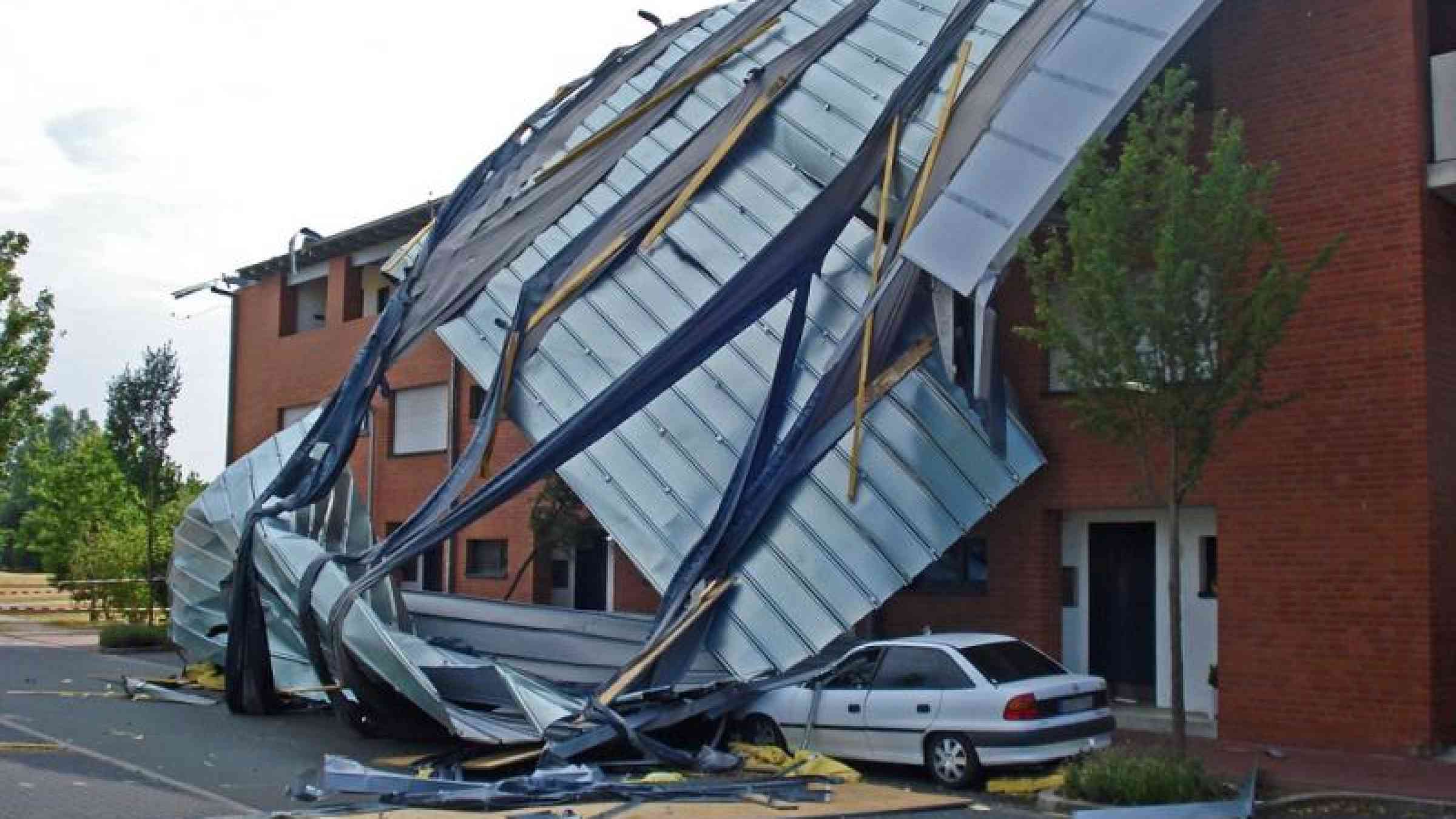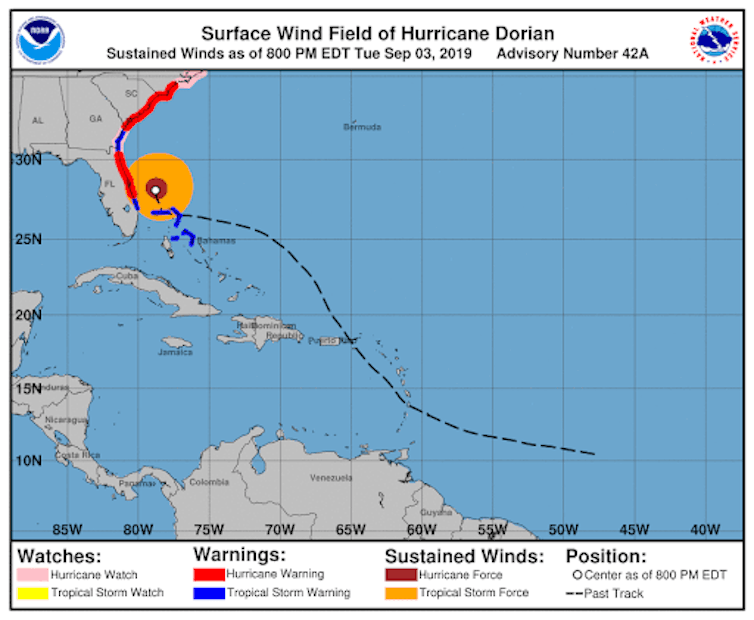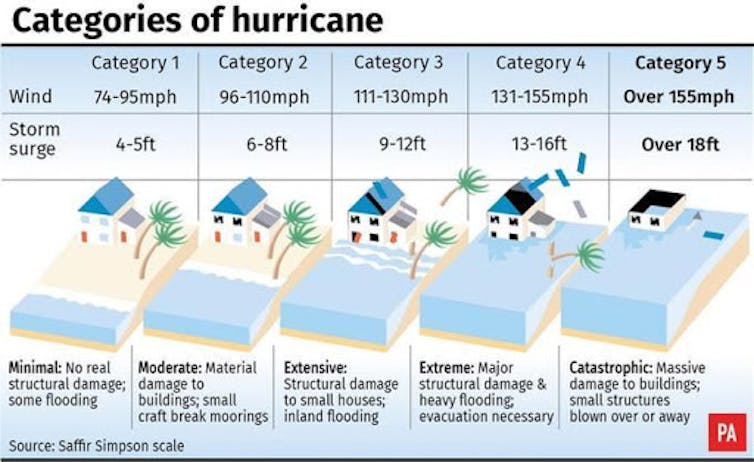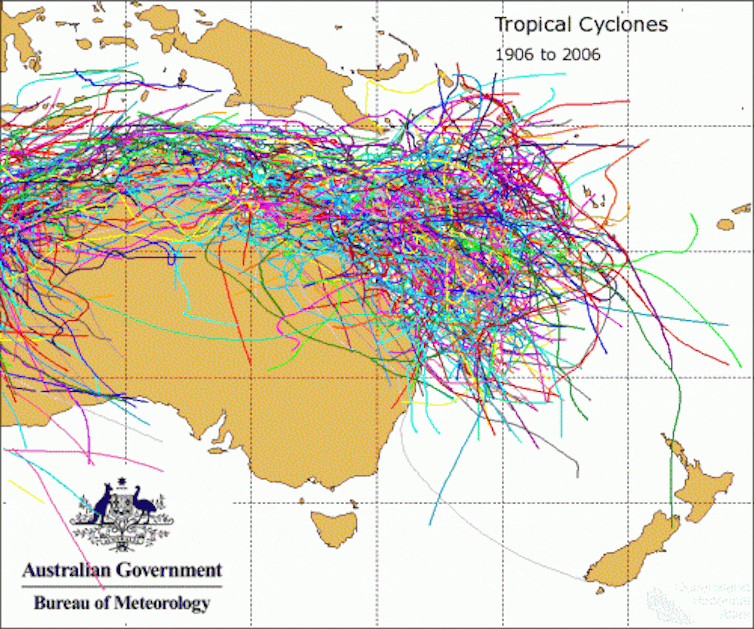Please help us improve PreventionWeb by taking this brief survey. Your input will allow us to better serve the needs of the DRR community.
Hurricane Dorian: Where it hit, where it’s headed, and why it’s so destructive

By Dale Dominey-Howes, Professor of Hazards and Disaster Risk Sciences, University of Sydney
At least seven people have died in the wake of Hurricane Dorian in the Bahamas, although that figure is expected to rise as rescue work continues.
Dorian began life as a small tropical depression southeast of the Lesser Antilles on August 24, 2019, and grew to be a Category 5 hurricane as it devastated the Bahamas.
At the time of writing, Dorian has been downgraded to a Category 2 storm and is currently tracking northward parallel to the US coast.

Path of Hurricane Dorian from its birth southeast of the Lesser Antilles to Tuesday September 3, 2019. NOAA
Where Dorian decides to travel next is still hard to forecast. It does not look like Dorian will make landfall in the United States, but the US National Hurricane Center currently expects it to turn northwards by Wednesday evening, followed by a turn towards the north-northeast on Thursday morning local time.
On this track, the core of Hurricane Dorian will move dangerously close to the Florida east coast and the Georgia coast. The centre of Dorian is forecast to move near or over the coast of South Carolina and North Carolina on Thursday through Friday morning.
Dorian is the second most powerful Atlantic hurricane on record, packing sustained winds of more than 270km per hour, with peak gusts approaching 350km/h. At its peak the storm system was more than 700km in diameter, causing massive rainfall and a huge storm surge peaking at more than 7 metres above sea level – both contributing to substantial flooding.
As a Category 2 storm, it still has 177km/h winds and tremendous destructive capacity.

Path of devastation
As Dorian passed over the Bahamas absolutely the worst scenario occurred: it more or less stopped dead in its tracks.
Slow-moving hurricanes do immense amounts of damage. Rather than moving on quickly, high winds, heavy rainfall and large storm surges all combine to hammer the landscape and of course, people, buildings and crucial infrastructure. Dorian sat over the Bahamas for more than 20 hours, maximising the amount of damage.
The official death toll is currently seven, but Prime Minister Hubert Minnis and national and international emergency management agencies expect that number to rise sharply as response and recovery teams start to gain access to heavily damaged areas.
Aerial footage is emerging of extensive damage across wide areas, with total devastation of built structures and massive impact on the natural environment.
Is Dorian linked to climate change?
Many people are understandably asking if there is a direct connection between human-induced climate change and Hurricane Dorian. The short answer is it’s hard to say.
Here’s what we know. By adding greenhouse warming gases to the atmosphere, more heat is trapped in the atmosphere and oceans. Increasing heat equals increasing energy in the atmosphere-ocean system, and increased heat fuels extreme events such as hurricanes, heatwaves, storms, and floods. A new science called “attribution” investigates the statistical probability that a particular event such as Hurricane Dorian is more likely in a human-warmed climate. Work is now under way to gather the data necessary to determine mathematically whether Dorian was likely connected to a warming world.
Regardless, previous work shows Atlantic hurricanes have been getting larger and more intense, and significantly more destructive.
What are the lessons?
Australia, like many parts of the world, is regularly affected by hurricanes, although we refer to them as tropical cyclones in the Indian Ocean or typhoons in the western Pacific.

Continued investment in detection, monitoring and forecasting are vital. Linked to this is the need for ongoing effects to improve community education about the dangers and how to prepare at the start of hurricane or cyclone seasons.
More research is needed to understand future changes in tropical cyclone frequency and intensity as well as their complex behaviour so experts can provide more reliable forecasts and path track estimates. This is really important because current forecasts show that in some parts of the world, the frequency and intensity of tropical cyclones will increase and in other parts, decrease. This has important implications for disaster preparedness and response.
Crucially, Dorian shows we cannot be complacent about the dangers of large-scale weather events, and the ongoing effects of climate change.
Explore further
Please note: Content is displayed as last posted by a PreventionWeb community member or editor. The views expressed therein are not necessarily those of UNDRR, PreventionWeb, or its sponsors. See our terms of use
Is this page useful?
Yes No Report an issue on this pageThank you. If you have 2 minutes, we would benefit from additional feedback (link opens in a new window).